Cathy Cha, President and CEO, Evelyn and Walter Haas, Jr. Fund: Working with partners to advance equitable solutions
May 11, 2023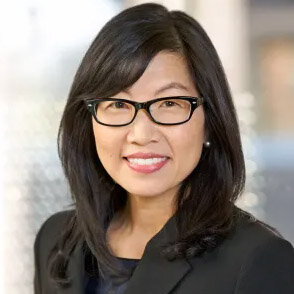
Cathy Cha has served as president and CEO of the Evelyn and Walter Haas, Jr. Fund since 2019, after serving as program officer, program director for immigrant rights, and vice president of programs. Known for its support for LGBTQ rights and marriage equality and Dreamer and immigrant rights movements as well as signature Bay Area initiatives, the Fund has pivoted over the past five years to focus on the issues of immigrant rights, college success, and democracy.
Cha discussed the organization’s latest efforts to help “make the world a better, fairer place” for communities facing threats; the intersectionality of and challenges in its focus areas; its investments in Black power building; the urgency of providing “fast R&D support” for innovative approaches to addressing racism and injustice; and the state of collaboration and diversity in the philanthropic sector.
Philanthropy News Digest: In our 2019 interview, you said: “These are extremely trying times for our country. Many communities we care about are feeling threatened and vulnerable....it’s an opportune time for us to think creatively about how we can have more impact.” In 2023, BIPOC (BLack, Indigenous, and people of color) communities are still feeling threatened and vulnerable, including Asian Americans, Native Hawaiians, and Pacific Islanders. How have your strategies evolved since 2019 to “maximize the huge potential of our staff and our nonprofit, government, and business partners to make the world a better, fairer place”?
Cathy Cha: Perhaps the biggest change is that we are looking more at partnering with local and state government as a path to outsized impact for the communities we care about. Across our priorities, we see how philanthropy, nonprofits, and communities can lift up more equitable solutions, but we know we need government and public institutions to step in, scale things up, make institutional changes, and make solutions stick. We know our grant budgets pale in comparison to government budgets, but we’ve found that we can play a helpful role in investing in R&D, moving fast, and helping to innovate and try new approaches that can be taken up and scaled by our public partners.
For many years, we and other funders have supported nonprofit and community voices so they could press public systems and government to do better. We’re still doing a lot of that through investments in organizing and advocacy in communities that have for too long been locked out of government and civic life.
But at the same time, we’ve expanded our toolkit so we can build deeper partnerships with government on really important issues facing our state and the country. The California Youth Leadership Corps is a recent example. It’s a partnership between the state, philanthropy, community colleges, and nonprofits to create career pathways for students in providing legal and language services for immigrants in California. We also worked with the City of Oakland on an initiative called Democracy Dollars designed to reduce the power of moneyed interests and expand resident involvement in campaign financing. Last but not least, we and other philanthropic partners are co-funding the California Dignity for Families Fund with the State of California to help migrant families and unaccompanied children at the U.S.-Mexico border.
More and more, we are finding that when we have willing partners in government, we can be complementary and have greater impact together.
More and more, we are finding that when we have willing partners in government, we can be complementary and have greater impact together.
PND: Over the last five years, the Haas, Jr. Fund has sharpened its focus on the issues of immigrant rights, college success, and democracy—issues you see as “real game changers” for advancing equity and justice for vulnerable communities. In what ways are those three areas—separately and/or together, intersectionally—especially critical to advancing equity and justice?
CC: The Haas, Jr. Fund has never shied away from tough issues. And the issues we are focused on right now are no different. The stakes are high, and there’s plenty of public discourse around each one. But imagine seeing breakthrough progress on any of these topics—welcoming and integrating immigrants more effectively into our communities, supporting more students to find the opportunities that come with a college degree, fixing our democracy so more people have power and representation. The impact for people and communities would be profound.
And yet, in each of these areas there are real structural problems standing in the way of progress. We can’t solve the college access problem simply by supporting more scholarships, as important as scholarships can be for individual students. And getting more people to vote is critically important, but the system still puts up real barriers to voting and political participation for people in many communities—the challenges for limited English speakers are just one example. So we have to look at root causes, and we have to build power and agency to make the case for far-reaching change.
California is a great laboratory for this work because of the incredible diversity of our population; we are a window on the future for the rest of the country. And when California gets traction on any one of these issues, we start to show what’s possible as the U.S. works to build a multiracial democracy where everyone has a voice and an opportunity to thrive.
PND: Many funders seem increasingly willing to center the voices of those with lived experience of an issue, fund BIPOC-led grassroots movement organizations, and provide multiyear unrestricted grants. The Haas, Jr. Fund was one of the founding funders of the California Black Freedom Fund in 2021 and provided seed funding for Activate California in 2022. How have the fund’s practices shifted around bringing in community partners, listening to them, and co-designing solutions?
CC: Those two initiatives are the result of community leadership and community voice. Activate California got started because AAPI leaders were having searching conversations about how to respond to a new wave of hate targeting our communities during the pandemic and a rise in anti-Asian violence. They decided on a proactive strategy to organize and engage Gen Y and Z AAPIs to shape our community’s story, activate new voices and power, and work across races for justice and safety for everybody.
The California Black Freedom Fund is a similar story. It emerged from working with Black leaders across our state after the murders of George Floyd and Breonna Taylor. We collectively decided that we needed to seriously step up investments in Black power building across California so Black-led nonprofits have the resources they need to tackle systemic racism and move forward on anti-Blackness. Ultimately, if we listen to and learn from Black leaders, they are going to lead us to solutions to many issues from education to criminal justice to affordable housing—and all Californians will benefit.
With both of these initiatives, funders could have done the standard thing and conducted research and held formal convenings and surveys, issued RFPs, and all the rest. But leaders across these communities were already in conversation about how they wanted to respond in these moments. Because we’re connected to so many community leaders, the best path for us was to bring those leaders in the room, listen and add ideas, and co-design solutions. I believe that’s a more impactful path forward.
There is a real power imbalance between philanthropy and nonprofits and communities. But we keep trying to chip away at it bit by bit. It’s never too early to bring in community partners. I believe that hearing their ideas and their needs and asking what we can do together improves results.
There is a real power imbalance between philanthropy and nonprofits and communities. But we keep trying to chip away at it bit by bit. It’s never too early to bring in community partners. I believe that hearing their ideas and their needs and asking what we can do together improves results. It’s how we try to live our organizational value of respect.
PND: The Haas, Jr. Fund works to provide “fast R&D support” for innovative approaches to addressing racism and injustice. What does that look like? Can you share a couple of examples such grants and their impact?
CC: One great example is the California Campus Catalyst Fund. Starting in 2017, young undocumented immigrants and their families were facing a new wave of fear with deportations and ICE [U.S. Immigration and Customs Enforcement] raids on the rise under the Trump administration. And so a small group of funders, educators, and advocates got together to talk about how to help and support undocumented students attending California’s public college and universities. The result was an unprecedented effort to bolster services and support for these students and their families across 32 different campuses, with a focus on community colleges.
Compared to other initiatives of similar scope, this one came together very quickly, and we had grants out the door in months, not years—which was important, given the fear in these communities and the real harms they were facing. And the impact across these campuses was profound. But even more importantly, after the end of the grants in 2021, the State of California picked up the baton and committed to funding these kinds of supports for undocumented students across all higher education systems in California. Thanks to philanthropy’s early investments, the state and higher education leaders saw how this support made a difference, and now more and more students and their families are benefiting. It’s an initiative that shows philanthropy at its best—working with partners to step up and test solutions that government can come in and scale.
PND: You joined the Haas, Jr. Fund in 2003 as a program officer, and when you were managing the immigrant rights portfolio from 2009 to 2016, much of your work involved collaborating with other funders. Looking back over the last 20 years, what do you see as the most salient change in the way foundations work together?
CC: I think the most salient change is that collaboration is in philanthropy’s bloodstream. Twenty years ago, I remember feeling like some of the partnerships I was in with other funders were really the first of their kind. At the time, you were happy to see even a small group of funders committing a relatively small amount of funds to do something modest like a report or a study together. Going it alone was the common practice.
But now, and especially here in California, partnership has become a powerful default way of operating and behaving for funders. When you are considering whether and how to invest in immigration, education, democracy, or other issues, your first step is to reach out to other funders in those spaces, find out what they are doing, and figure out how you can work together. It’s like muscle memory the more we do it. And groups like Grantmakers Concerned with Immigrants and Refugees (GCIR) make it easier, because they have staffed committees where all of these funders come together to share information and learn and work together. So collaboration is becoming core to philanthropy, and that includes partnering with other funders and grantees, as well as with government, civic, and business partners.
The California Black Freedom Fund, the California Campus Catalyst Fund, and other collaboratives have had phenomenal impact far beyond anything Haas Jr. or any other funder could have had on their own. And I think more and more funders are seeing that. Today’s problems are so big and entrenched, going it alone doesn’t get you far.
If we want to go the next step in making collaboration part of philanthropy’s muscle memory, funders are going to have to get more comfortable with new ways of measuring and attributing impact and success.
The only challenge I see is that some funders still appear dead set on wanting to attribute a causal relationship to their grants. They want to draw a direct line from their work to solutions on the ground. That’s much harder to do in a collaborative space where you are working alongside other funders and government and nonprofits to get to shared goals. If we want to go the next step in making collaboration part of philanthropy’s muscle memory, funders are going to have to get more comfortable with new ways of measuring and attributing impact and success. Ultimately, I think we need to understand that there are many factors that contribute to success or to a problem. We’re thrilled to be part of a transformative victory arm-in-arm with a long list of diverse partners.
PND: As an Asian American woman leading a foundation focused on social justice causes, how do you assess the progress on increasing diversity in philanthropic leadership? (According to the Council on Foundations’ 2022 Grantmaker Salary and Benefits Report, people of color now make up 14 percent of foundation CEOs, up from 12 percent in 2021.) And has the escalation in violence targeting Asian Americans since 2020—about which you’ve spoken out in solidarity with other leaders—changed how you see your role?
CC: I feel good about philanthropy in California. Can we do better? Of course. But at the CEO tables where I sit, I am encouraged by the diversity and strong leadership I see. The four Bay Area community foundations all have leaders of color; three of them are Black. The same goes for the two largest health-focused foundations in California. Philanthropy in California is led by incredible Black and Latinx leaders, and there is emerging leadership in AAPI communities as well. And I think we will continue to make progress to the extent that we create more space in our organizations for diverse young leaders to grow because I see a tremendous and inspiring talent pool of younger leaders.
I have two Gen Z children, and I know that young people today bring a powerful analysis and new talents to the issues foundations are working on. Young people know tech and social media, they understand how injustice affects opportunities for them and their peers, and they are committed to doing something about climate change and poverty and injustice. At younger ages, they develop a sophisticated analysis about corporations, media, and politicians. They have an awareness about racial justice and othering that’s deep. We need to develop this leadership in our organizations and across movements. That’s the only way to make sure our field is going to be truly representative and vital going forward.
As for my role in this moment, I will continue to speak out on issues when it makes sense. But in reality, philanthropy’s voice is not the most important voice. I think it’s more critical to create space and opportunities for community leaders and community members so they can speak out and step into their power.
PND: According to the Asian Americans and Pacific Islanders in Philanthropy (AAPIP), as of 2018, AAPI organizations received less than 0.2 percent of foundation funding. What do you see as the largest factor behind the underfunding, and do you expect that percentage to increase?
CC: At Haas Jr., we’ve done a lot of work with a lot of partner funders to drive new resources and attention to AAPIs as well as Black and Latinx communities. One barrier we run into is people in philanthropy and across society don’t really understand how diverse and nuanced our community is. My family’s Korean history of war, colonialism, and rapid economic development is vastly different than a Hmong refugee, Indian immigrant, or Native Hawaiian, yet we’re all lumped together.
There are segments of the AAPI community that face profound challenges and high levels of poverty and need. And I think philanthropy could do a better job understanding and communicating that—just like I think philanthropy, us included, can learn more about the diversity of other communities of color or the LGBTQ community. More than disaggregating data among AAPIs, what’s important is investing in helping different AAPI communities fully engage in civic life and build bridges with Black, Latinx, and Native/Indigenous communities. I care a lot about how we are bridging communities and races and bringing people and organizations and movements together to advance justice and equality across the board. Coming together on common goals will strengthen our multicultural democracy.
And when it comes to the levels of funding for different communities, I’ve said publicly in AAPI circles that I believe we should focus on increasing the pie for everyone. That’s why we’re working with Asian American Futures right now on an initiative to tap into AAPI wealth and encourage high-impact philanthropy among AAPI donors. I think we can be creative about increasing AAPI donor engagement and resources in a way that isn’t “us vs. them” and doesn’t shift limited foundation funding away from Black, Latinx, or Native/Indigenous communities. This country has vast private wealth; we should be able to increase the pie.
I want to see all of the communities we care about find resources and support so they can keep their eyes on the prize and work together to achieve the kind of changes we all want to see in California and nationwide.
—Kyoko Uchida


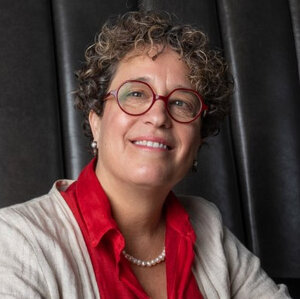
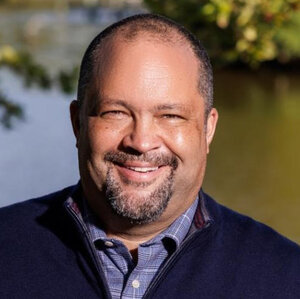
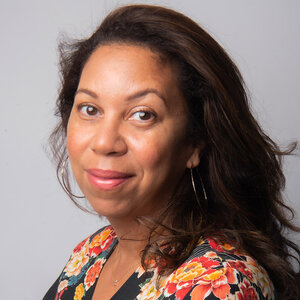


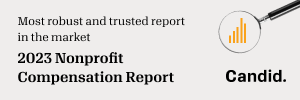
Fund communities of color ‘like you want us to win’